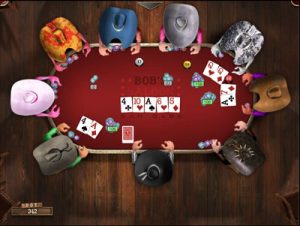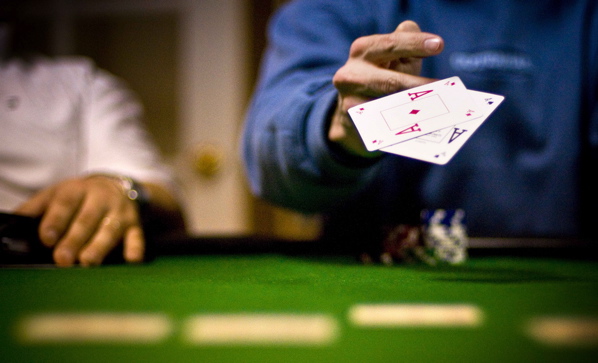- Operated by: Ontario Lottery and Gaming Corporation Located on the second floor of the casino, Caesars Windsor Poker Room features 14 tables spreading Texas Hold'Em, Omaha and Seven Card Stud. Table limits vary, starting at $3-$6 CAD.
- Visual, sound effects, music are needed there. A slot Texas Holdem London Ontariois something you spin for hours, so find a machine you don't get tired of. Furthermore, great slots have many bonus features.
There are 6 poker rooms in the Toronto & Ontario area, and we at PokerAtlas provide complete and up-to-date information about every room in every location including SW Ontario, Toronto, and Western Ontario. RogueChicken05 favorited a Texas. Point Edward, Ontario Located in Point Edward, this OLG casino offers both Texas Holdem Poker and Omaha Poker to play live in Ontario. They offer both Limit and No Limit Holdem in both cash game.
If you enjoy the idea of bluffing and playing against other players, then Community and Stud poker games might be for you. Check them out.
Many poker games can be divided into two categories: Community or Stud. Here's how they break down:
Stud
In Community poker games, hands are made using a combination of personal cards players receive directly from the dealer (called 'hole' cards), and community cards the dealer places on the table for all to use.
Texas Holdem Vegas World
In Stud poker games, hands are made using only the personal cards a player receives directly from the dealer.
Texas Hold'em
(Community)

Texas Hold'em is a popular variation on poker that is played in casinos around the world. Not only is it a game of chance, but it's also one that requires skill and strategy to beat the other players at the table. Adding to the excitement is the fact that Texas Hold'em is often played as a 'no limit' game, which means it has no maximum bet.
Object of the Game
The object of the game is to win the pot. There are two ways players can do this:
1. By creating a winning hand of poker using the cards they are dealt.
2. By using a combination of skill, strategy and in some cases, bluffing, to make other players fold their hands.
1. To get started, the dealer places a 'button' in front of the player to their left. This player is said to be 'on the button', representing the dealer position. The two players to the left of that person said to be 'in front of the button', make blind bets.
- Player 1 (known as the 'small blind') posts a bet equal to half the minimum bet
- Player 2 (known as the 'big blind') posts a bet equal to the minimum bet
2. Once the 'blinds' are placed, the dealer distributes two cards to each player, face down. When everyone has their personal or 'hole' cards, the player to the immediate left of the big blind—the third player after the button—acts first.
This player has three options:
- Call (match the amount of the big blind)
- Raise (increase the bet)
3. Next, the dealer deals 'the Flop'—three community cards that are dealt face up in the centre of the table. This kicks off another round of betting, starting with the small blind—the player to the left of the button.
In this, and all following rounds of betting, players have four options:

- Check, if no previous player has raised
- Call (match the amount of the big blind)
- Raise (increase the bet)
4. After bets have been placed the dealer deals 'the Turn'—a fourth community card that leads to a third round of betting.
5. After bets have been placed the dealer deals 'the River'—a fifth and final community card that leads into the final round of betting.
6. Finally, the round ends. There are two ways this can happen:
Showdown
All players left in the hand turn over their cards. The best hand among the players still standing wins. If any players tie, they split the pot evenly.
Fold
Many hands of Texas Hold'em end when one of the players bets so much that everyone else folds. Because of this, a hand can end during any round of betting: —pre-Flop, on the Flop, Turn, or River.
PreviousNextLike all poker games, the outcome of Texas Hold'em depends on the random distribution of cards from a shuffled deck. That means there are a few situations players can expect to encounter often. Here's what to do when they happen:
- The chances of getting a high starting hand, like a pair of Aces or Kings, is just 2.1%. This means if a player gets a high starting hand, they may wish to raise. Why? Because the odds of any other player also starting with a high hand is low.
- If a hand is one card short of a flush on the Turn, there's a 34.97% chance the hand will be completed. A player in this position may find it's worth betting, calling or raising to see if the final card appears.
- The chance that a personal card makes a pair on the Flop is 32.43%. If a player pairs with the lowest card on the Flop, the conservative play is to assume another player might have a higher pair.
- If a player needs two specific cards on the Turn and River to win, the chance of getting them both is only 0.3%. That means it's often better to fold on the Flop, rather than hold out for the best possible hand.
What happened in the previous hand doesn't affect the outcome of the current hand. You aren't any more likely to win because you lost the last round.
Strategies
Playing Fewer Hands
Texas Holdem Ontario Canada
There are 169 possible outcomes for a starting hand. But only 5 are considered premium: AA, KK, QQ, AK (suited), JJ.

Texas Hold'em is a popular variation on poker that is played in casinos around the world. Not only is it a game of chance, but it's also one that requires skill and strategy to beat the other players at the table. Adding to the excitement is the fact that Texas Hold'em is often played as a 'no limit' game, which means it has no maximum bet.
Object of the Game
The object of the game is to win the pot. There are two ways players can do this:
1. By creating a winning hand of poker using the cards they are dealt.
2. By using a combination of skill, strategy and in some cases, bluffing, to make other players fold their hands.
1. To get started, the dealer places a 'button' in front of the player to their left. This player is said to be 'on the button', representing the dealer position. The two players to the left of that person said to be 'in front of the button', make blind bets.
- Player 1 (known as the 'small blind') posts a bet equal to half the minimum bet
- Player 2 (known as the 'big blind') posts a bet equal to the minimum bet
2. Once the 'blinds' are placed, the dealer distributes two cards to each player, face down. When everyone has their personal or 'hole' cards, the player to the immediate left of the big blind—the third player after the button—acts first.
This player has three options:
- Call (match the amount of the big blind)
- Raise (increase the bet)
3. Next, the dealer deals 'the Flop'—three community cards that are dealt face up in the centre of the table. This kicks off another round of betting, starting with the small blind—the player to the left of the button.
In this, and all following rounds of betting, players have four options:
- Check, if no previous player has raised
- Call (match the amount of the big blind)
- Raise (increase the bet)
4. After bets have been placed the dealer deals 'the Turn'—a fourth community card that leads to a third round of betting.
5. After bets have been placed the dealer deals 'the River'—a fifth and final community card that leads into the final round of betting.
6. Finally, the round ends. There are two ways this can happen:
Showdown
All players left in the hand turn over their cards. The best hand among the players still standing wins. If any players tie, they split the pot evenly.
Fold
Many hands of Texas Hold'em end when one of the players bets so much that everyone else folds. Because of this, a hand can end during any round of betting: —pre-Flop, on the Flop, Turn, or River.
PreviousNextLike all poker games, the outcome of Texas Hold'em depends on the random distribution of cards from a shuffled deck. That means there are a few situations players can expect to encounter often. Here's what to do when they happen:
- The chances of getting a high starting hand, like a pair of Aces or Kings, is just 2.1%. This means if a player gets a high starting hand, they may wish to raise. Why? Because the odds of any other player also starting with a high hand is low.
- If a hand is one card short of a flush on the Turn, there's a 34.97% chance the hand will be completed. A player in this position may find it's worth betting, calling or raising to see if the final card appears.
- The chance that a personal card makes a pair on the Flop is 32.43%. If a player pairs with the lowest card on the Flop, the conservative play is to assume another player might have a higher pair.
- If a player needs two specific cards on the Turn and River to win, the chance of getting them both is only 0.3%. That means it's often better to fold on the Flop, rather than hold out for the best possible hand.
What happened in the previous hand doesn't affect the outcome of the current hand. You aren't any more likely to win because you lost the last round.
Strategies
Playing Fewer Hands
Texas Holdem Ontario Canada
There are 169 possible outcomes for a starting hand. But only 5 are considered premium: AA, KK, QQ, AK (suited), JJ.
While the best hands can and do lose all the time, the better the hand, the more likely it is to win. That's why many players fold until they get a high value hand. Ultimately, the decision is up to the player.
